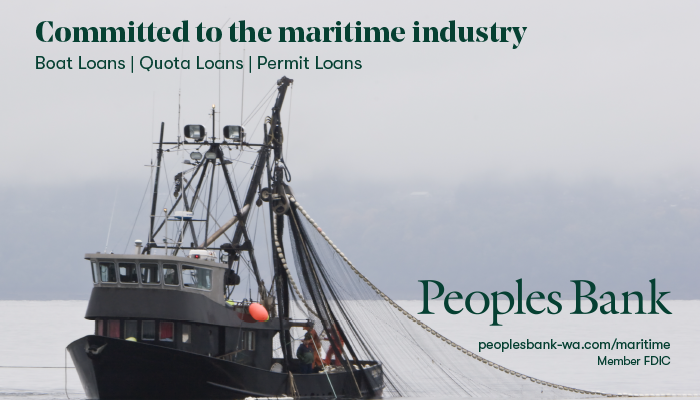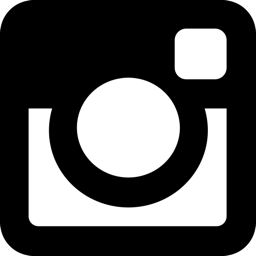Fish Factor by Laine Welch
September 15, 2020
Bering Sea crabbers will soon know how much they can pull up in their pots for the upcoming season that opens October 15.
This week the Crab Plan Team, advisers to state and federal fishery managers who jointly manage the fisheries, will review stock assessments and other science used to set the catches for Bristol Bay red king crab, Tanners and snow crab.
Normally, the biggest driver would be data from the annual summer trawl surveys that have tracked the stocks for decades. But this year, the surveys were called off due to the Covid virus and that has crabbers worried.
“There are certainly some added uncertainties,” said Jamie Goen, executive director of the trade group Alaska Bering Sea Crabbers, which represents harvesters.
Goen said the fleet is anticipating an opener for red king crab, likely less than the 3.8 million pounds taken last season.
“Our preliminary indication is that there is possibly going to be a small red king crab fishery. However, we’ve heard from scientists in the past that there has not been good recruitment into that fishery for over a decade,” Goen said.
On the brighter side, the snow crab stock has been on a steady upward tick.
“We’ve been seeing a lot of recruitment of young crab into this fishery, so even without a survey I think the outlook is good. It’s hard to say, though, given the lack of a survey whether the TAC (total allowable catch) would end up being about the same as last year, which was 34 million pounds, or if it would go up or down,” she added.
Bairdi Tanners, snow crab’s larger cousin, also could be in play after a two year closure. That fishery produced 2.4 million pounds in 2018, and nearly 20 million pounds prior to that.
The volatility of the crab stocks and the missing updates from the canceled surveys has the fleet fearing it will result in extra, unnecessary fishing restrictions.
“We’re concerned that without a survey, managers will be adding extra buffers for uncertainty which would further reduce our TAC,” Goen said. “We’re already a heavily buffered fishery because of the variability in our stocks. We don’t even come close to approaching our existing buffers, so we don’t think more need to be added.”
The total 2019/20 Bering Sea crab catch was 44.4 million pounds for a value of $199.2 million, according to NOAA Fisheries in Juneau.
Goen had high praise for the collaborative research being done by the industry and scientists to improve understanding and management of the crab stocks through the Bering Sea Fisheries Research Foundation.
Tune in live to the Crab Plan Team meetings from September 14 through 17. The agenda and documents are on the North Pacific Fishery Management Council website. On Friday, September 18, there will be a short meeting recap.
More crab – One of Alaska’s most stable fisheries, golden king crab from the Aleutian Islands, has been underway since August and will produce over six million pounds.
In waters closer to home, Dungeness crab fisheries at Southeast and Kodiak are producing some of the best catches in decades.
At the Panhandle, a fleet of 192 permit holders hauled up nearly six million pounds of dungies during a summer fishery that ran from June through August 15 and will reopen on October 1. Managers base the seasonal catch on the first week’s performance, which produced a quick 1.4 million pounds, compared to 772,000 in the first week last summer.
“We did pretty good right off the bat,” said Adam Messmer, regional shellfish manager for the Alaska Dept. of Fish and Game in Douglas.
At an average price to fishermen of $1.67 per pound (down from $3.01 last year), the summer fishery was valued at nearly $10 million at the Southeast docks.
The dungies were big and full, Messmer added, referring to fewer soft-shelled crabs that are in the molting process and can’t be sold. The region’s lousy salmon season could mean more boats will be out on the water when the Dungeness fishery reopens in a few weeks, he added.
Messmer advised that with the closure of the ADF&G office in Wrangell where many crabbers reside, they need to register at the Petersburg office.
“They should get on top of that sooner rather than later because not having that Wrangell office is a new thing we’re dealing with,” Messmer said.
And more crab
Kodiak crabbers are having their best Dungeness fishery in 30 years, with the catch since May at nearly two million pounds taken by 25 vessels and five good weeks of fishing left to go.
“And we’re seeing similar good production through the Alaska Peninsula and Sand Point area where they are at 810,000 pounds so far. That’s more than in any recent season,” said Nat Nichols, area shellfish manager for ADF&G at Kodiak.
The higher catches are due in part to “more horsepower on the grounds” as opposed to a higher abundance of crab, and Nichols added that the current dungie cohort could be the tail end of a peak.
“We’ve got 50 to 60 years of history to look at and Kodiak Dungeness crab are very cyclical. In the past these harvest peaks have lasted three years or so and then we kind of go down until we get another big group of crab coming through,” Nichols explained, adding that there does not appear to be many small Dungeness crab coming up behind the current crop.
What is coming up are lots of Tanner crabs. Nichols, fresh off the summer survey vessel, said the largest group of tiny Tanners they have ever seen “is still out there” and the crabs appear to be growing fast. Biologists have been tracking the new pulse of Kodiak Tanners since 2018 and next year’s survey could see a significant portion of them reaching legal size, he said. Only legal-sized male crabs can be retained for sale.
Meanwhile, local crabbers might not see the expected slump between the 2013 year class of Tanners they’ve been tapping on and the arrival of the 2018 cohort.
“At first glance it looks like we’ve met the minimum threshold of 100,000 pounds in each of three different sections so having a fishery in January is a possibility,” Nichols said. “I would not have predicted that a year ago.”
On a related note: Tanner crab is spelled with a capitol T because the species was named after its discoverer, Lieutenant Zera Luther Tanner, commander of the research vessel Albatross that explored Alaska waters in the late 1800s.
Clean up!
The third Saturday of September is International Coastal Cleanup Day, started in 1986 by the Ocean Conservancy. Since then, millions of volunteers have collected and categorized over 300 million pounds of trash from beaches and waterways worldwide.
For the 2019 pickup, more than 940,000 volunteers in 116 countries collected nearly 32.5 million pieces of trash of which a record 4.7 million were food wrappers for candy, chips, etc. They also picked up 4.2 million cigarette butts, 1.8 million plastic bottles, 1.5 million plastic bottle caps, and more than 940,000 straws and drink stirrers. Last year was the first time food wrappers beat cigarette butts as the most collected item.
Nick Mallos, director of Ocean Conservancy’s Trash Free Seas program, said over 35 years the cleanup has revealed the switch to single-use plastics and its detrimental impact on ocean pollution.
In the early days, Mallos said glass bottles, metal caps, and paper bags were most prevalent in the list of top collected items. By 2017 the entire top 10 list included all plastic items (cigarette butts count as plastic trash because the filters are made of plastic fibers) and it has remained that way ever since.
Mallos called the issue of single-use plastics, especially food wrappers, both a design and a recycling problem that highlights the need for different types of packaging and better waste management.
“Cleanup efforts are only a band-aid, not a complete solution,” he told Fast Company magazine, which focuses on innovation in technology and “world changing ideas.”
“With food wrappers taking over the number one pollution spot, it really underscores the unsustainable production of single-use disposable foods and beverage packaging that’s not recycled or nonrecyclable in most cases, as well as the gross inadequacies to responsibly manage this plastic waste in almost all communities around the world,” Mallos said. “We need to solve this problem upstream so that plastics never enter our waterways and never reach the beaches in the first place.”






